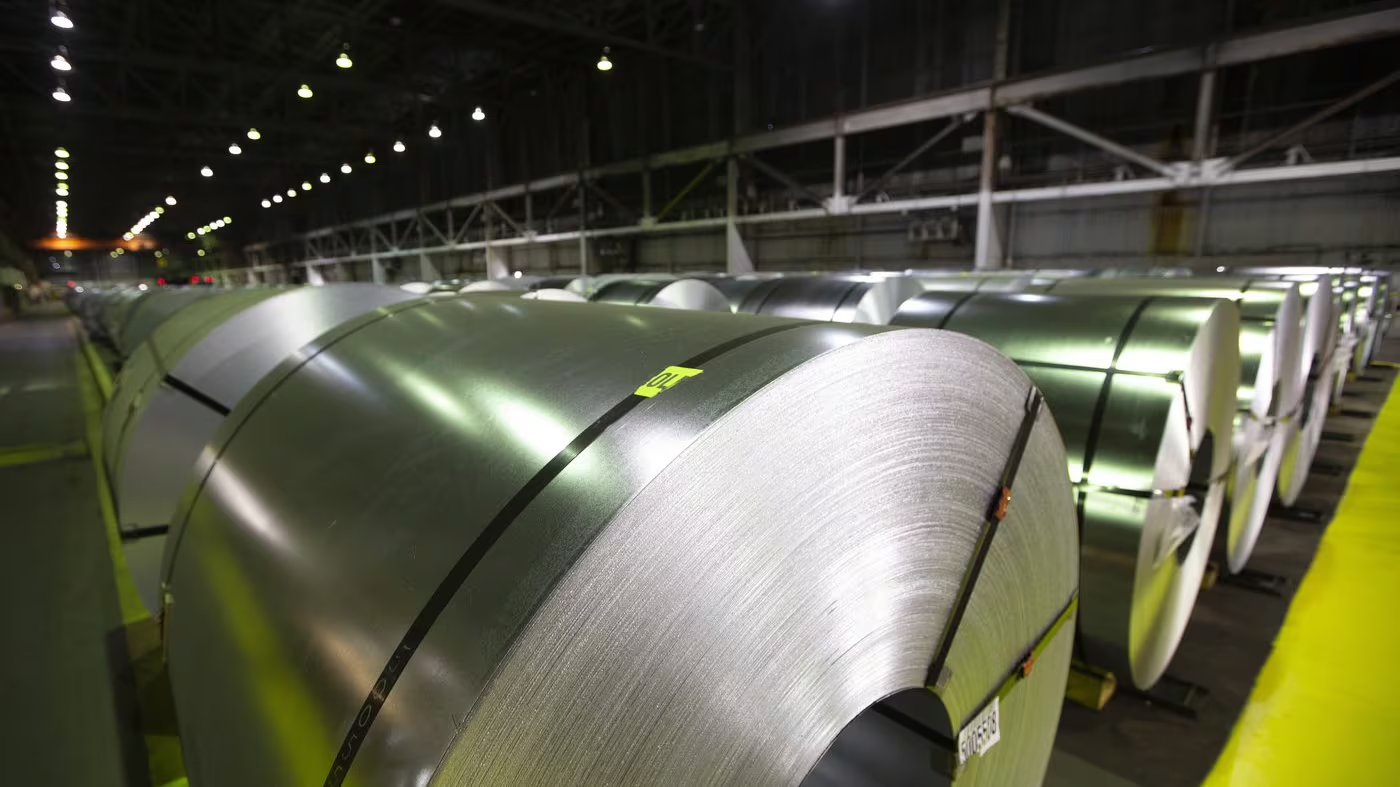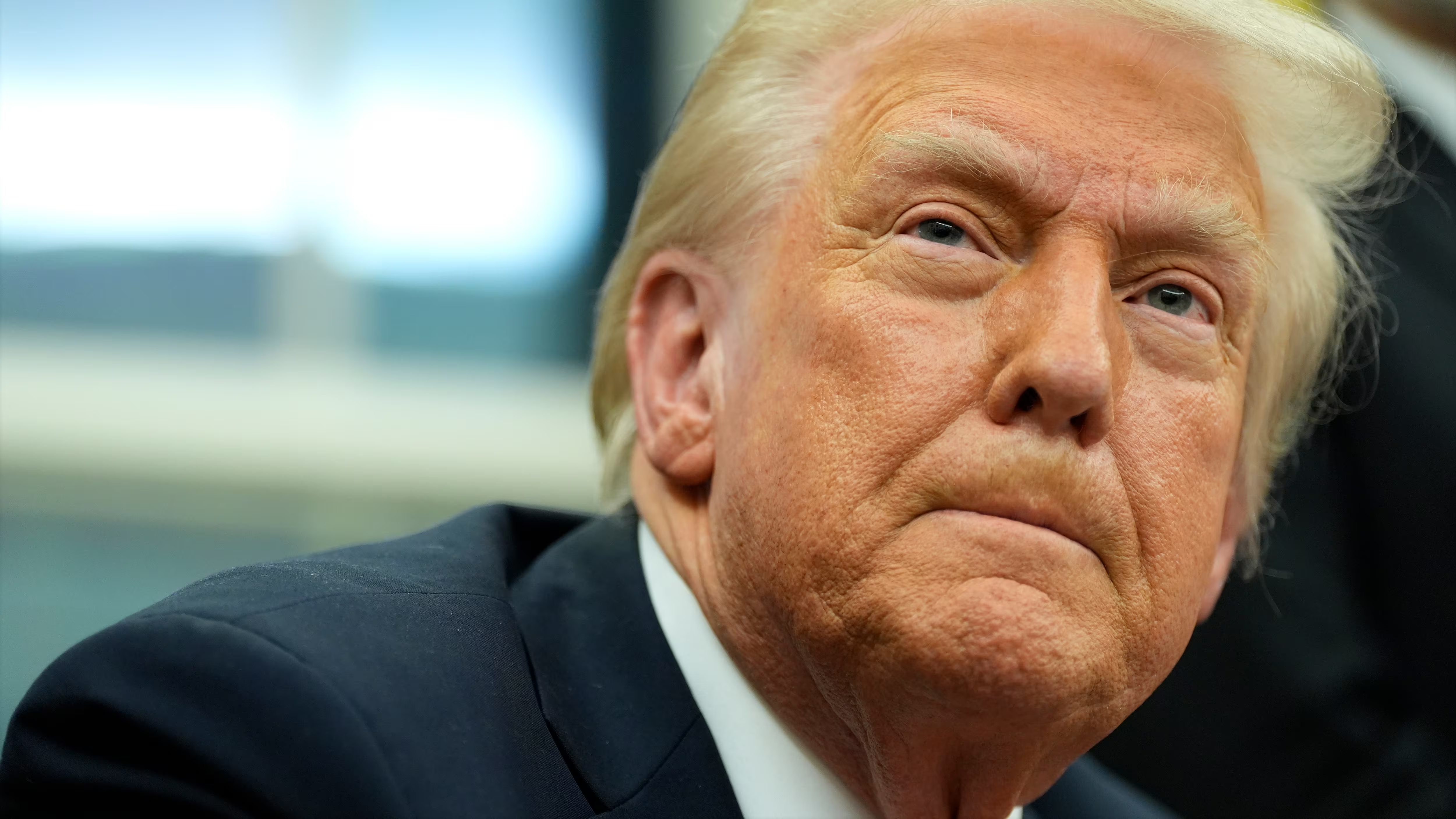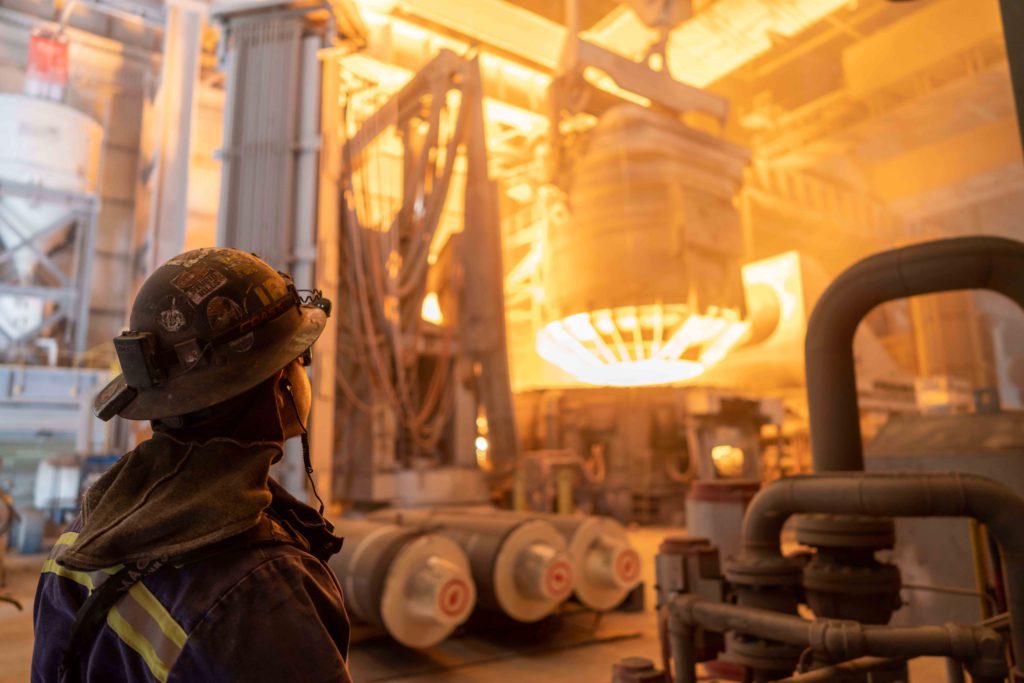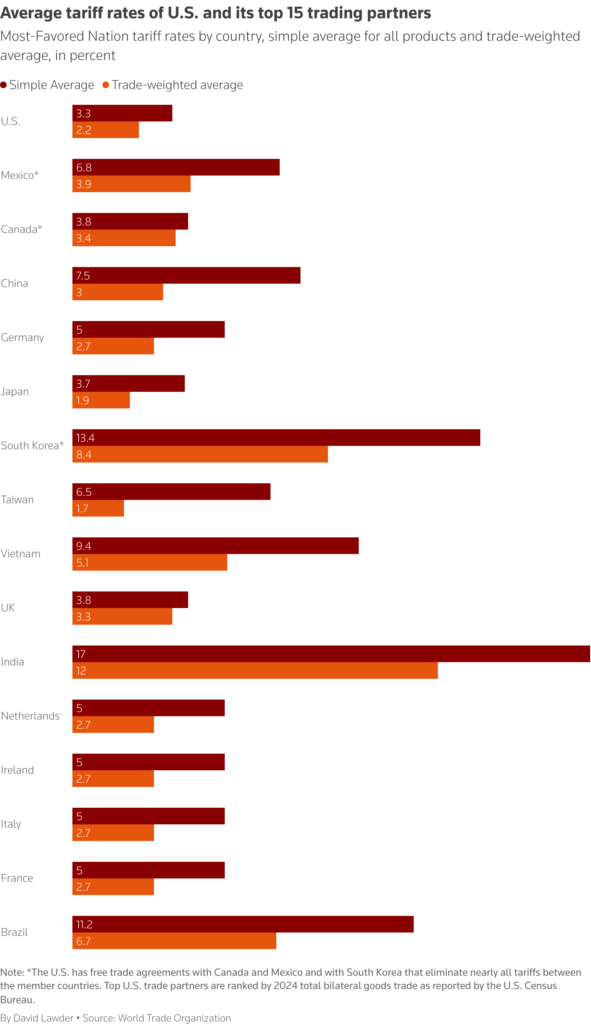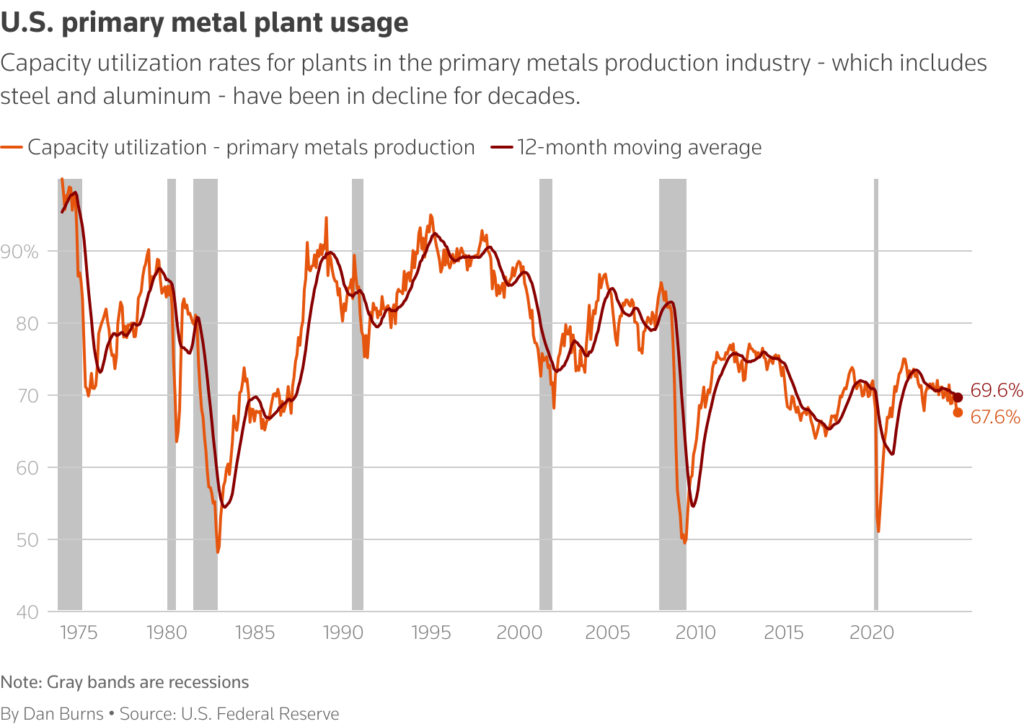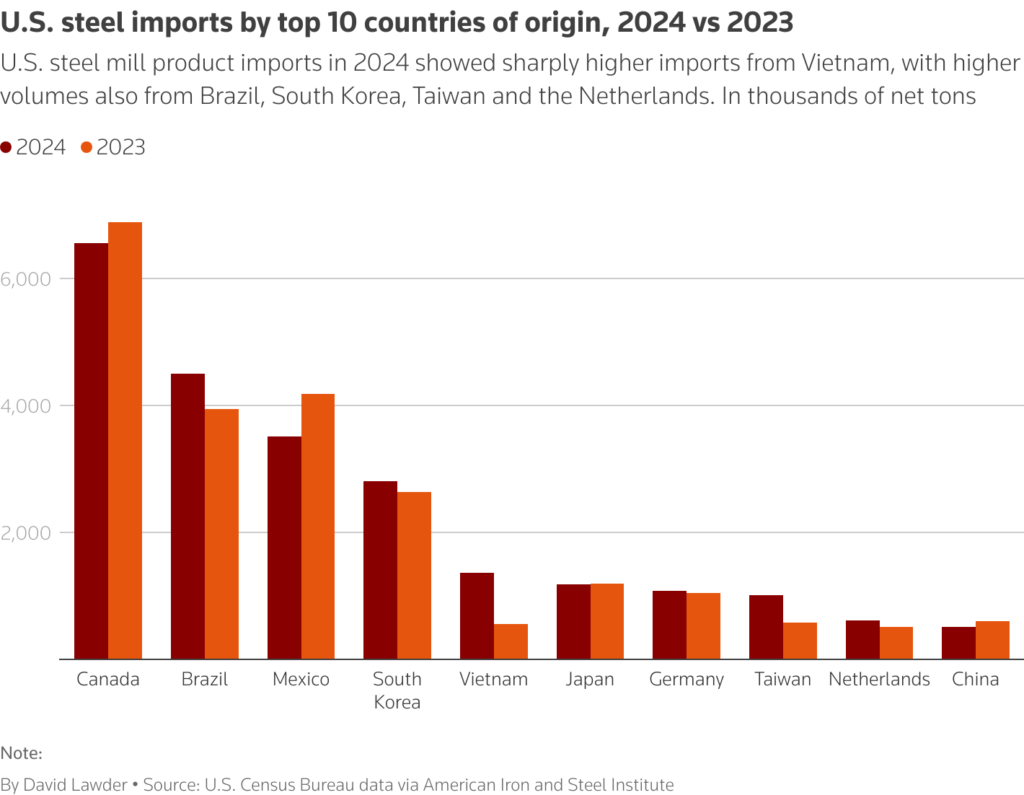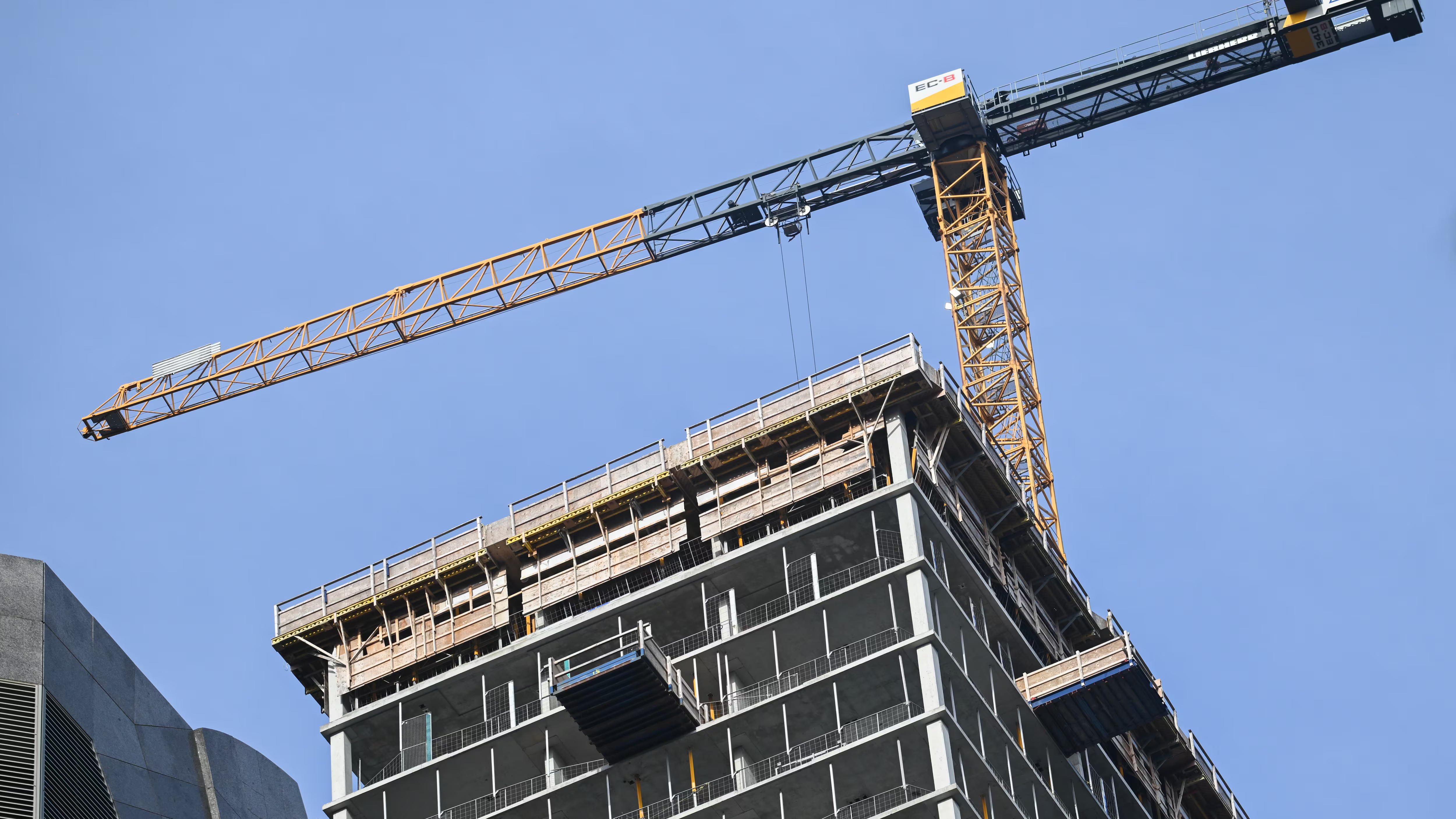Reuters | February 11, 2025
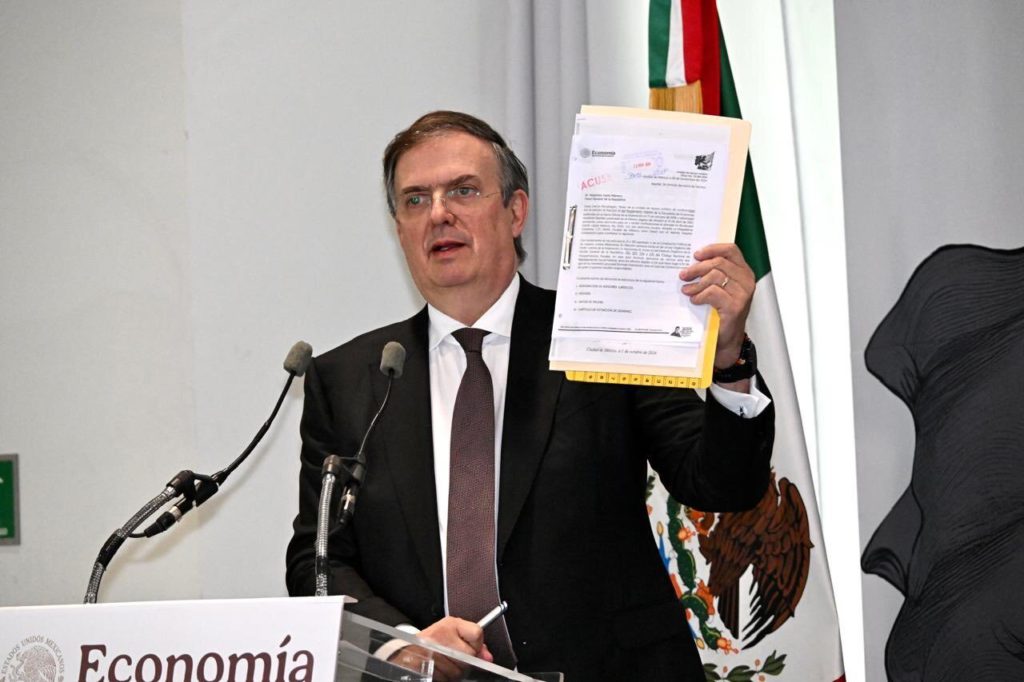
Mexican Economy Minister Marcelo Ebrard.
Mexico’s government on Tuesday questioned the fairness of a 25% tariff ordered by US President Donald Trump on its steel and aluminum imports, stressing that Mexico buys more steel from the US than it exports to its northern neighbor.

Mexican Economy Minister Marcelo Ebrard said the announced tariffs were unfair and unjustified because the US runs a steel and aluminum trade surplus with Mexico.
Speaking at a regular government press conference, Ebrard pointed to data showing Mexican steel shipments to the US falling since 2022, while Mexico’s imports of US steel grew in the same period.
“That tariff is not justified,” said Ebrard. “It’s unfair according to President Trump’s own arguments. Because we, I repeat, have more (steel) imports than exports.”
Later on Tuesday, Mexico’s steel chamber Canacero warned that the US duties would harm the local industry as well as supply chains across North America. It called for retaliatory tariffs on US steel if Mexican exports are not exempted from the duties.
In a statement, the chamber urged Mexican authorities to protect the national industry, noting that the threatened tariffs would hit three quarters of Mexican steel exports worth $2.1 billion.
Nearly a quarter of all steel used in the US is imported, and Mexico is among its largest suppliers, with Canada and Brazil.
Trump on Monday raised tariffs on steel and aluminum imports to a flat 25% “without exceptions or exemptions,” in a move he hopes will aid the struggling US industries.
However, the move risks fueling a trade war with Mexico, its top trading partner. The steel and aluminum tariffs are set to take effect on March 12.
A separate, paused, across-the-board 25% tariff on all US imports from Mexico and Canada is set to come into force on March 4.
Ebrard did not say if Mexico planned reciprocal tariffs on US steel or aluminum.
He said he plans to speak next week with the US commerce secretary and the US trade representative, pending their Senate confirmations.
The latest Trump tariff announcement is similar to duties he slapped on the metals during his previous term, from which Mexico was later exempted.
At the time, those tariffs pushed up prices for finished cross-border trade goods that use the metals, such as autos and appliances.
Shares in Mexican miner Industrias Penoles fell 5% on Tuesday while Grupo Mexico was down more than 1%.
Significant global steel producers in Mexico include ArcelorMittal and Ternium.
Josh Spoores, a North American steel analyst for business intelligence company CRU Group, confirmed Mexico runs a trade deficit on steel with the United States. He said it was hard to assess longer-term consequences of the US tariffs because it would largely depend on what retaliatory measures Mexico takes.
“It’s dynamic in the sense that we expect trade retaliation to come,” Spoores said.
“Potentially, they (Mexico) could put tariffs on steel coming from the United States… that could impact the supply in the United States,” he added.
(By Brendan O’Boyle, Stefanie Eschenbacher and Noe Torres; Editing by Aida Pelaez-Fernandez, Nick Zieminski and Rod Nickel)
